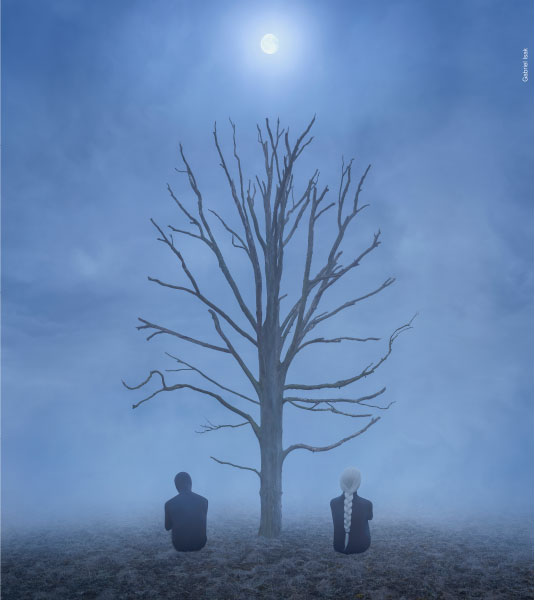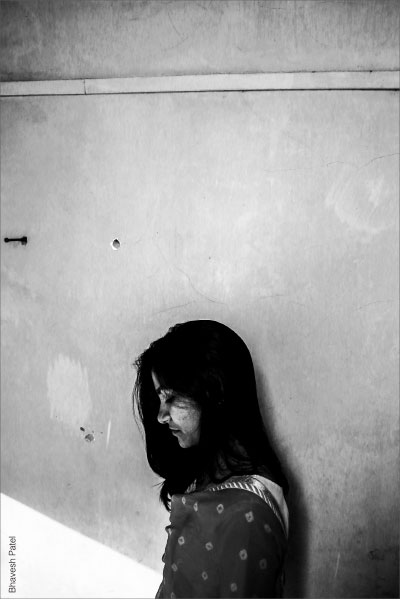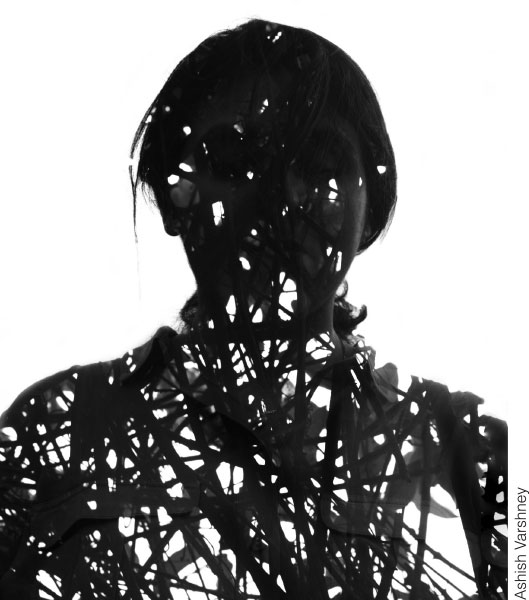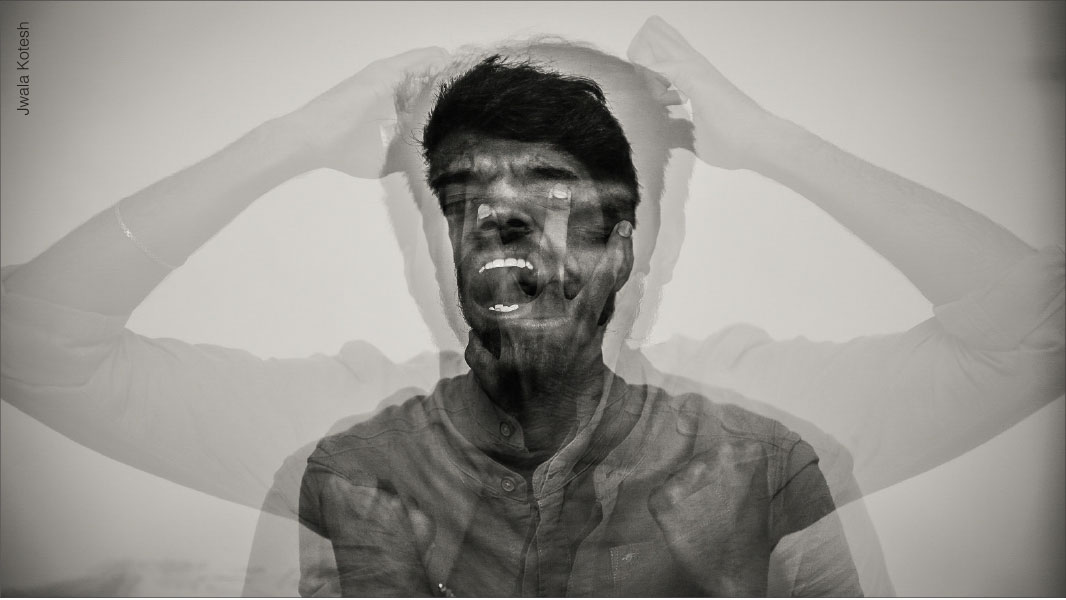Suicide is a cry for help
The calm of a Sunday morning was destroyed by the shouting of an angry father next door, telling his 10-year-old daughter… “Just go and die. Jump down from the top of the building.” He does this often; my shock was compounded when the chubby child once told me quietly: “One day I’ll do just that.”
Next morning, a newspaper headline screamed: 19-year-old IIT-Madras student, depressed over low marks, commits suicide.
A 2015 WHO study found one in five Indians may suffer from depression in their lifetime; only 10–12 per cent seek medical help. After cardiac diseases and diabetes, suicide is the third cause of death in India.
“Suicide is the punctuation mark at the end of many artistic careers,” says Dr Lakshmi Vijayakumar, a suicide specialist with two honorary fellowships from the Royal College of Psychiatrists, London and Edinburgh.
The reasons vary from “inter-personal conflicts — with parents, friends or peers — which cause a lot of distress in 15–29-year old youngsters. It could be academic issues or relationship stress. Perfectionism is one of the reasons that affects a person negatively with stress and bring the idea of suicide. In older people, it is mostly economic issues.”
Today’s youth want instant gratification. They don’t have the patience to wait or understand the perspective of the parent.
– Dr R Thara, Vice Chairman and Chair, SCARF
Dr R Thara, Vice Chairman and Chair, SCARF, says a major cause for suicide is the inability to tolerate the intensity of depression. The hallmarks of depression are helplessness and hopelessness. “If they feel that they have no support, then people tend to gravitate to suicide. Often it is an impulsive reaction after failing in an exam, not getting a course the student wants, and even flimsy causes as the father not getting the child an iPhone or a high-end motorbike.” Today’s youth want instant gratification. They don’t have the patience to wait or understand the perspective of the parent, she adds.
Ruling out peer pressure, she says, “Rather it is their own pressure. Peers don’t tell them I have an iPhone, you too get one. It is just that, he has an iPhone. So I too should own one.”
Domestic violence, excessive alcohol abuse can trigger suicide in the lower classes, especially where women are unable to bear the brunt and so, take their lives. Dowry deaths could be homicide or suicide.
Dr Lakshmi says that in India, more men than women commit suicide. But while older men (70 and above) end their lives, suicide is more common in the 18–29 age group in women. After 30, suicide rates come down by half.
The psychology
Parents’ lofty expectations, teachers’ hurtful admonishing, and a relationship gone sour, trigger suicidal thoughts in the young, particularly if their support system is weak. As most married women have a child by 30, that bonding sees them through problems. But later, when the children leave, they have to cope alone with health and finance.
Suicide in youngsters is a spontaneous reaction. Given a chance they wouldn’t even think about it.
– Dr Lakshmi Vijayakumar
Serials and cinemas also play a role in planting suicidal thoughts in young minds, says Dr Thara. “They think ending their life is easy as depicted in some movies. They know nothing of the pain in hanging or jumping from a rooftop or before a train, or burning themselves.”
Even cartoon movies can trigger suicidal thoughts in youngsters as children as young as 7 or 8 are exposed to dialogues like ‘I want to die’. Earlier children below 14 committing suicide was almost negligible. But of late children between 10–14 are known to commit suicide, says Dr Lakshmi.
Have you treated children of that age attempting suicide, I ask her. “Yes,” she answers gravely. “There was this brilliant child whose parents were very supportive, and didn’t force him academically or otherwise. But everybody expected him to outperform; the child felt overwhelmed and panicked, thinking if he was not able to live up to their expectations, he’d be failing them.”
When he topped the class after an exam and the teacher said he’d surely get a State-rank, he became stressed and wrote a suicide note saying, “I may be brilliant, but I am not sure if I will be able to meet all your expectations.” He hanged himself to death at the age of 10! Being in Scouts, he knew the exact knot to tie. It was his own fear of failure that result in the suicide here.
Another child who had typhoid, couldn’t prepare for her exam, was caught copying and as her parents were summoned the next day, that evening she climbed up the school building and fell to her death. Anything that brings shame or disgrace is a huge trigger for suicide in the young. They have still not developed a sense of identity or aren’t mature enough to handle stress. “Suicide in youngsters is a spontaneous reaction. Given a chance they wouldn’t even think about it,” she adds.
Dr Thara says that while in the West suicide is committed using guns or an overdose of drugs, in India, especially in Tamil Nadu, women take their lives by hanging or burning themselves; the last is unheard of in the West. The reasons are largely similar, except that there is a little more loneliness there. “Social isolation and less of social support is prevalent which is not much of a cause in India, but slowly spreading. We all live with families. If we do not take advantage of our social network, then it becomes a problem, paving way for depression.”
She says the Blue Whale challenge in India “was more a media hype. We did not see any case related to the game.”
The first thing in dealing with suicide counselling is being there with the person, though you can’t solve their problem. We can guide them how to handle the problem and prevent them from taking any drastic action.
A counsellor at IIT-Madras in the 1980s, Dr Thara throws light on why brilliant children who can enter an IIT, end their life so pathetically. Social and economic disparity, particularly for those who come from remote or rural areas, makes it difficult for such students to adjust to an “environment that is so different. English is spoken and they find it hard to adjust to the demands of the environment and the professional course they take. They probably have no idea what a PhD in IIT involves, aren’t able to cope with the pressures and don’t know where to seek help, even though these institutions have counsellors. Often it is the disparity between their potential and what is expected in that course.”
“The first thing in dealing with suicide counselling is being there with the person, though you can’t solve their problem. Such as an alcoholic husband. We can guide them how to handle the problem and prevent them from taking any drastic action.”
Dr Thara recalls counselling an educated and IT-savvy woman in her early 20s, who got married at 18, but wasn’t allowed by her husband and his family to work. Frustrated she first slashed her wrist, was hospitalised and treated. But when they refused to allow her to work, she tried hanging herself with her saree. “She was miraculously saved and brought to me. I convinced her family to let her do part-time work. She later called to tell me she was happy to be out of the house doing what she liked to do, even though for only few hours a day.”
Dr Lakshmi talks about a child who had lost her mother to cancer and her father married again. Unable to get along with her stepmother, she consumed a mosquito repellant, and was brought to her. After three months of counselling the parents and the child, she is fine now, says the doctor.
So how receptive are parents to counselling after a child survives a suicide attempt? “Most are remorseful and realise the pressure undergone by the child; some feel extremely guilty and go all out to make their child comfortable. Others are ‘neutral’ and adopt a matter-of-fact manner as to what needs to be done. But some think the child has brought dishonour to the family, get stressed and angry with the child for attempting suicide. It is imperative to spend more time with such parents and counsel them more to make them understand what the child has gone through.”
On repeat triggers even after counselling sessions, she says that suicide is an acutely stressful syndrome and this acute phase lasts for 2–3 weeks. If in this period they get support, suicide can be prevented. “Yes, one year later, if they get similar stress, the person may feel suicidal. Research has shown that in 100 people with suicidal thoughts, only 10 have died of suicide. It is both an impulsive and ambivalent phenomenon. The wish to live or die is a see-saw battle for them. They say: ‘it is not that I really want to die; but I can’t go on living like this.’ At that moment, if you increase the wish to live, suicide can be prevented.”
The wish to live or die is a see-saw battle for them. At that moment, if you increase the wish to live, suicide can be prevented.
Suicide is a cry for help. It is a form of communication. The majority of suicidal people tell someone about their wish to die or give them hints. “It is we who do not hear them properly. We just give them advice and say, ‘don’t worry. Everything will be alright. Look at people who are worse than you and be happy.’ Or at best we say, take a week off and go on a vacation.”
To avoid suicidal thoughts, says Dr Lakshmi, “have healthy connections with family, friends and society. Then you will not feel lonely. If you have mental health issues, please reach out for help. Many people suffer in silence. They don’t want to talk about their problems, fearing stigma. There are enough treatments and strategies to tackle any kind of mental health issues. Also, remember that problems are temporary. Have the persistence and patience to see yourself through your challenges.”
104 is another helpline launched by the Tamil Nadu government in 2013 with clinical psychologists on call to counsel those contemplating suicide. This helpline is operated by a private company GVK EMRI.
What can Rotary do?
Organisations like Rotary can help in addressing this issue in a big way. “They have done so much for polio and literacy. Mental health is a current, modern crisis. In fact, we want to start something called the SnehaChat, because even email has become obsolete for today’s people. This requires more resources. If Rotary can help it will be hugely beneficial. We need volunteers to oversee the chat process. We cannot do it from Sneha, because we are already overburdened,” says Dr Lakshmi.
Rotary can increase awareness about suicide and initiate a programme in higher secondary schools to encourage children to develop positive mindset, suggests Dr Thara.
Rural suicides
To tackle suicides in rural belts where the most common method is ingestion of pesticides, lockers have been provided for people to store their pesticides and insecticides, thus making them unreachable for the spur-of-the-moment decisions. “We have done this in two villages in Cuddalore district. In the last six years there has been no suicidal deaths in these two villages. Local Rotary clubs can also adopt this as their community projects. WHO has hailed this initiative as one of the most cost-effective methods of preventing suicide,” says Dr Lakshmi. She is now all set to replicate this model in 54 villages in Gujarat. “We are going to train 500 community health workers. They will identify people who are suicidal in each village and provide appropriate referrals.”
Remember that problems are temporary. Have the persistence and patience to see yourself through your challenges.
The Mental Healthcare Act of 2017 has decriminalised suicide. Till two years ago, it was a problem that anybody attempting suicide was punished.
People rarely bring flowers to a person who has committed suicide. Death is life’s way of saying you’re fired; suicide is your way of telling life you quit. So reach out and get help before it is too late, for, every problem has a solution, smiles Dr Lakshmi.
Gabriel Isak is a Swedish photographer, who, having battled depression, now uses his experience and art to portray mental health and illness.
Helpline Sneha
The Sneha Suicide Prevention Helpline, founded by Dr Lakshmi, is offering 24-hour on-call support, with a team of volunteers since 1986. One of the earliest helplines, it has been critical in suicide prevention in the city. The helpline was established after the psychiatrist came across the work of the Samaritans in the UK. They use volunteers to talk to people with suicidal inclinations. “When I went to Vienna to present a paper on suicide at an international conference, I was surprised to see the kind of work people have done on suicide prevention. This was 33 years ago; in our country we did not have any mechanism to stop suicide.”
The idea was met with lot of skepticism. “Chennai was still Madras and a very conservative community. People said nobody will come and talk to you that they want to commit suicide. Or, how can you run an organisation only with volunteers. I just went ahead and established Sneha in 1986.”
For an extremely suicidal person, we are probably the last link before he makes the decision. That link is very precious to us.
The helpline is open 365 days a year ever since except for the day the entire city was reeling under floods. The volunteers running the helpline even pay for their own transport. “When Rajiv Gandhi was assassinated, one of our volunteers, a 60-year-old man, cycled all the way from Perambur for two hours to reach office. That’s the kind of dedicated volunteers we have.” While earlier people used to drop in at the office to discuss their problems, the facility moved on to telephone services. Now many youngsters prefer email. On an average Sneha gets about 60 calls a day, 80 per cent from people who are acutely suicidal or in the middle of the act: ‘I have taken four tablets and have another 10 in my hand. Or I am standing on top of my apartment building,’ those are the kind of calls we get nowadays,” says the doctor.
So how does she manage such situations? “The basic need for any human being is acceptance, irrespective of what he/she has done. A beggar came to Sneha and said, ‘please give me some money. I want to eat.’ One of our volunteers made him sit down and explained to him about our work. At the end of it, he stood up and said, “please don’t give me money ma. This is the first time somebody has made me sit on a chair and treated me like a human being.” That is total acceptance of the person. The next is availability. We are available 24×7, completely non-political, non-religious. The third thing is absolute confidentiality. Come what may, we will not share with anybody whatever was disclosed to us in absolute faith. We get calls from IAS officers and other persons who say, ‘I don’t want to give my name but I just want to talk. The most important thing is empathy. Understanding the person for what they are going through and be with them in their situation. For an extremely suicidal person, we are probably the last link before he makes the decision. That link is very precious to us,” says Dr Lakshmi.
The volunteers are trained and the selection criteria are rigid. “Last time we had 150 applications, and shortlisted just 15. It is tough and emotionally draining. One has to be extremely warm, at the same time, know where to draw the line. There should be a very fine balance.” They are trained for 40 hours and are on probation for six months. Each volunteer gives four hours a week. Care is taken to see the volunteers don’t get impacted as “it is not pleasant to hear sob stories. The patients speak for at least an hour and calls come from across India and even from countries like Dubai and Abu Dhabi. They call through Skype or some social media methods. If required, the volunteers refer callers to a professional mental healthcare experts.”








